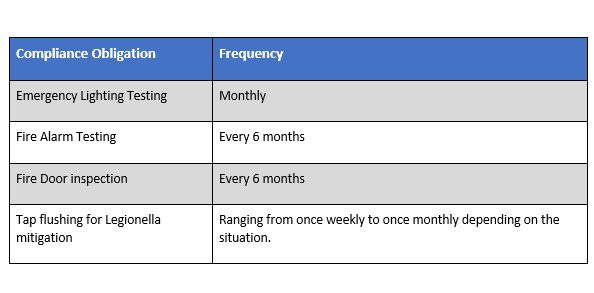Our friends at Safecility told us about some of their remote testing innovations that can help reduce carbon emissions. Here’s what they say:
While the current spotlight is on long term deep property retrofits to enhance homes and make them easier to heat – there are some quicker impact measures large estate owners can take to reduce their carbon emissions. This is where IoT (“The Internet of Things”) comes into the equation.
The “Internet of Things”[1] or IoT are physical devices that are connected to the internet. These devices are game changers for many industries but particularly as part of a building management strategy. The devices can remotely collect information such as temperature and humidity levels or even automate tasks such as turning lights on or off in the building. The beauty of IoT is that all of this data collection and automation happens discreetly and remotely.
Using IoT and sensor technology to monitor and automate health and safety compliance testing (and more) can play a massive part in helping local councils, housing authorities and large scale landlords reduce their carbon emissions. How? By cutting out unnecessary journeys.
At Safecility, we have IoT automation devices for emergency lights, legionella testing, inspecting fire doors, pre-empting mould issues, and more. Take a minute to assess the traditional way of maintaining these ongoing compliance obligations in your building stock. It usually involves personnel traveling to each location one by one. It’s time consuming, costly, and laborious.

IoT sensors offer seamless health and safety compliance monitoring and automation. These devices are revolutionising compliance testing and overthrowing the outdated, traditional manual model. Not only are they quicker, easier and safer than manual testing and inspection, they’re a positive step towards reducing carbon emissions and saving our planet.
When it comes to the matter of emissions, consider the amount of carbon producing trips that can be negated each year by reducing in-person testing and callouts – it’s enormous.
Think about it, there’s millions of rented homes, retail units, factories, schools, museums etc in the UK. That’s a lot of journeys up and down the country to test fire alarms, emergency lighting and to flush taps. With IoT and sensor devices, these journeys no longer have to happen. By doing away with these trips we reduce the carbon footprint of estate owners across the country, and in turn, reduce that of the nation as a whole.
One of our clients, a facilities management firm has eliminated 90% of the journeys needed to inspect their onsite emergency lights and cut the cost of testing by 50%. They’re saving money while slashing their carbon emissions and freeing up valuable human resources that can be directed to areas of greater need.
Not only are you slashing emissions, you’ve also got higher compliance completion and accuracy as there’s no human error involved. So it’s benefitting the building owner and their operational costs, the quality of life and safety of those who live and work in the buildings, and most importantly the planet we all share.
[1] https://www.oracle.com/ie/internet-of-things/what-is-iot/
